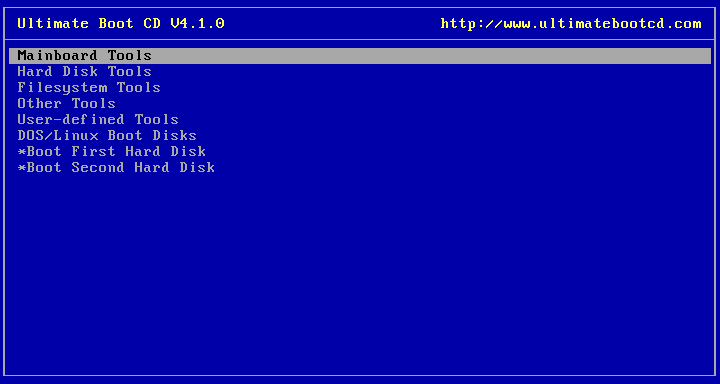

Use that virtual disk in the command line to start QEMU: $ qemu-system-i386 -hda image.img -cdrom FD12CD.iso -m 16M -boot order=dc Booting the FreeDOS 1.2 installer in QEMU.Īnd follow the prompts to install FreeDOS: Starting the FreeDOS 1.2 installer in QEMU. Then define a virtual disk with the qemu-img command: $ qemu-img create image.img 200M Any program that works on MS-DOS should also run on FreeDOS.įirst, download a copy of the FreeDOS 1.2 install CD-ROM from the FreeDOS website, as FD12CD.iso.
#Bootcd msdos software
Let’s try it with an example: installing a copy of the FreeDOS operating system. FreeDOS is an open source DOS-compatible operating system that you can use to run legacy business software and other DOS applications. Now that we have the essentials to start a virtual machine with QEMU, we can put it all together on a single command line to create and boot your virtual machine! For example, set -boot order=dc to tell QEMU to try the CDROM ( d ) first, then the hard drive ( c ). Use -boot to specify the order that QEMU should look for bootable devices. You can also append a suffix of M or G to specify the memory in MB or GB. If you do not explicitly set this, QEMU defaults to 128 MB. Set the amount of memory in the virtual machine with the -m size option.
#Bootcd msdos iso
For example, this might be the bootable ISO image to install Linux, Windows, or another operating system. Set -cdrom isofile to define the CD-ROM or DVD image file.

This should be the same virtual disk you defined with the qemu-img command. Use -hda imagefile to tell QEMU to use imagefile as the hard drive image. To emulate a more modern system, use qemu-system-x86_64.
#Bootcd msdos Pc
To emulate a legacy PC system, use qemu-system-i386. Other media, including other hard drives or CD-ROM drives, are assigned D:, E:, and so on. A: and B: are the first and second floppy disk drives, and C: is the first hard drive. In DOS, just as in Windows, drives are represented as letters. You’ll need a place to install the legacy system inside QEMU, and for that you’ll need a virtual C: drive. QEMU provides excellent system-level compatibility and support, making it an ideal and lightweight virtual machine environment. If you run Windows or macOS, the QEMU website provides packages for those platforms, too. The open-source PC emulator QEMU is included by default in most mainline Linux distributions, but you can also download versions of QEMU for other Linux distributions. And that’s where system emulation comes in. Right? But what do you do on the fateful day that someone needs to access data that’s trapped in an old legacy application? If modern applications can’t read the data, you need to run the legacy system. This only signifies that a boot CD should be allowed to run with the particular Operating System it was designed for.That old legacy system is gone, never to be heard from again. Since all Operating Systems have different contents needed for its boot CD, there are different types of boot CD. This built-in program initiates the execution of the programs saved in the boot CD.

The Boot CD can only automatically run through the Windows startup if the computer has a built-in program developed according to the boot CD’s standards. Boot CD may also be used in (1) the installation of the Operating Systems (2) lost data recovery (3) troubleshooting of software and hardware (4) demonstration of software (5) purging of data (6) customization of the Operating System (7) administrative access that allows the retrieval of forgotten passwords, and (5) loading of games. This removal data storage can load and run the Operating Systems as well as other utility programs. A boot CD consists of DOS commands and programs compressed using removable data storage. MS-DOS Boot CD is used for booting a CD instead of the hard drive upon the Windows startup.


 0 kommentar(er)
0 kommentar(er)
